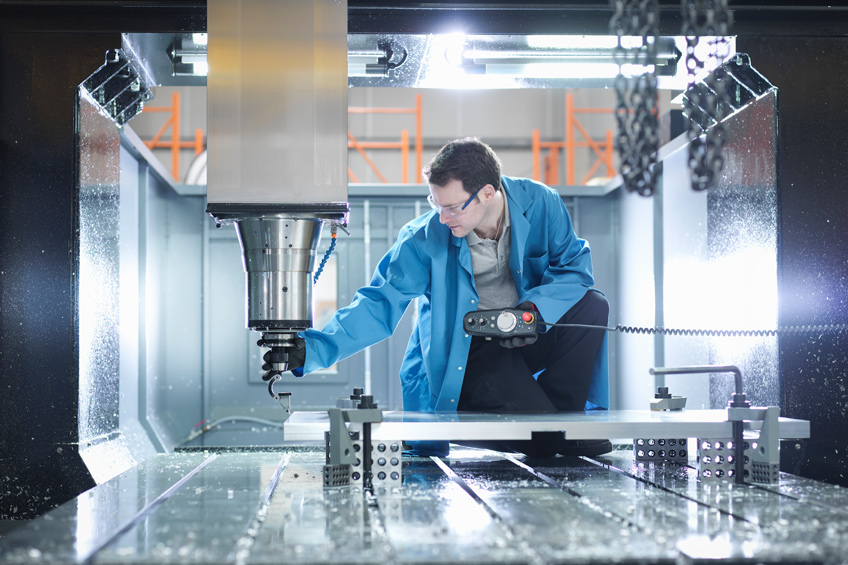From the smart factory to the smart manufacturing enterprise

What is a smart factory? The manufacturing industry has been asking that question for several years and largely settled on an answer, and it goes something like this:
A smart factory uses advanced technology, such as the Internet of Things (IoT, sometimes called the Industrial IoT or IIoT), to optimize production processes within a single manufacturing facility. Advanced technology is deployed to gain data about, and increase control of, manufacturing operations to enhance productivity. Vibration or thermal sensors in the equipment? Check. Measurable reductions in unscheduled downtime? Check.
Many consider the smart factory project done once the IoT devices are installed and are producing data and measuring productivity improvements. There is nothing wrong with that answer, and this is the type of smart factory approach that many manufacturers implement today. I also talk with some firms that operate on the old “if it ain’t broke, don’t fix it” maxim. These companies will acknowledge the potential advantages of how technology enables the smart factory, but they are focused on other issues they think are more strategic in nature, such as supply chain management.
They are just components of the same journey that will eventually be taken. That journey that takes the manufacturer from the smart factory to the smart manufacturing enterprise.
Point solutions vs comprehensive plans
The smart factory approach solves specific challenges in operating the factory: for example, monitoring machine health. These point solutions generally stop at the factory’s doors. In contrast, the smart manufacturing enterprise connects the advanced technologies used in the production process (smart factory) to other parts of the business, such as supply chain management and product development. For the smart manufacturing enterprise, advanced technologies are building blocks of a larger strategy that weaves together operating technology (OT) with information technology (IT). Rather than viewing the factory as a unique island of operations, manufacturers can see it as part of a larger digital infrastructure.
Let’s look at an example, one that is becoming more common in an age of hybrid workforces: remote access to data. Plant managers and technicians need access to their plant’s operating data, but they may be at home, in a satellite office, in an airport or walking down the street. The data is incredibly valuable to the manufacturer, but also to bad actors looking to steal the data itself or find an avenue to penetrate the enterprise at large. Access to this data must be secured.
Manufacturers often use multiple layers of security to protect their data and their OT systems, which may not have been designed for today’s modern networking and security standards. Within the factory, data is often replicated from OT systems to IT systems as means to lower any potential surface areas of attack.
Secure Access Services Edge (SASE) is a set of integrated technologies that provides a framework for securing remote data access. SASE builds profiles for users, devices and access channels to properly authenticate both the user, the particular data that the user is permitted or restricted to use, and the security of the connection being used. For example, SASE could protect against data breaches that often occur over public Wi-Fi connections, most notably at airports.
SASE can also be configured for devices (such as certain IoT devices) that need access to data from other remote devices. SASE helps isolate components of your network to contain worst-case security scenarios. Those IoT devices expand the attack footprint for attackers and have to be secured. The IoT is already pushing a lot of computing out to the edge. You can secure the smart factory at the edge as well.
Integrating across the enterprise
The scenarios where IoT is a building block of a smart manufacturing enterprise are limited only by imagination. With the right connections, IoT can help manage the supply chain through inventory tracking, warehouse integration and other automated functions. Some factories have even built digital twins of the factory for long-range management and planning. Digital twins require large amounts of compute and storage capability, but they can’t exist in a vacuum. They need the data coming off the machines to be accurate models of the enterprise’s needs. Likewise, sustainability reporting is an increasingly onerous compliance requirement. Once again, IoT can produce the data, but it needs to be integrated with other systems to process and present it properly.
The smart manufacturing enterprise involves the integration of various systems and technologies, such as IIoT, advanced analytics, and flexible manufacturing systems, to optimize the entire manufacturing value chain. Smart manufacturing allows for real-time decision-making and optimization throughout the entire manufacturing process, leading to increased efficiency, productivity, and agility.
How integrated is your factory? Let’s map your journey to the smart manufacturing enterprise today.
This content is provided for informational purposes only and may require additional research and substantiation by the end user. In addition, the information is provided “as is” without any warranty or condition of any kind, either express or implied. Use of this information is at the end user’s own risk. Lumen does not warrant that the information will meet the end user’s requirements or that the implementation or usage of this information will result in the desired outcome of the end user. All third-party company and product or service names referenced in this article are for identification purposes only and do not imply endorsement or affiliation with Lumen. This document represents Lumen products and offerings as of the date of issue.






